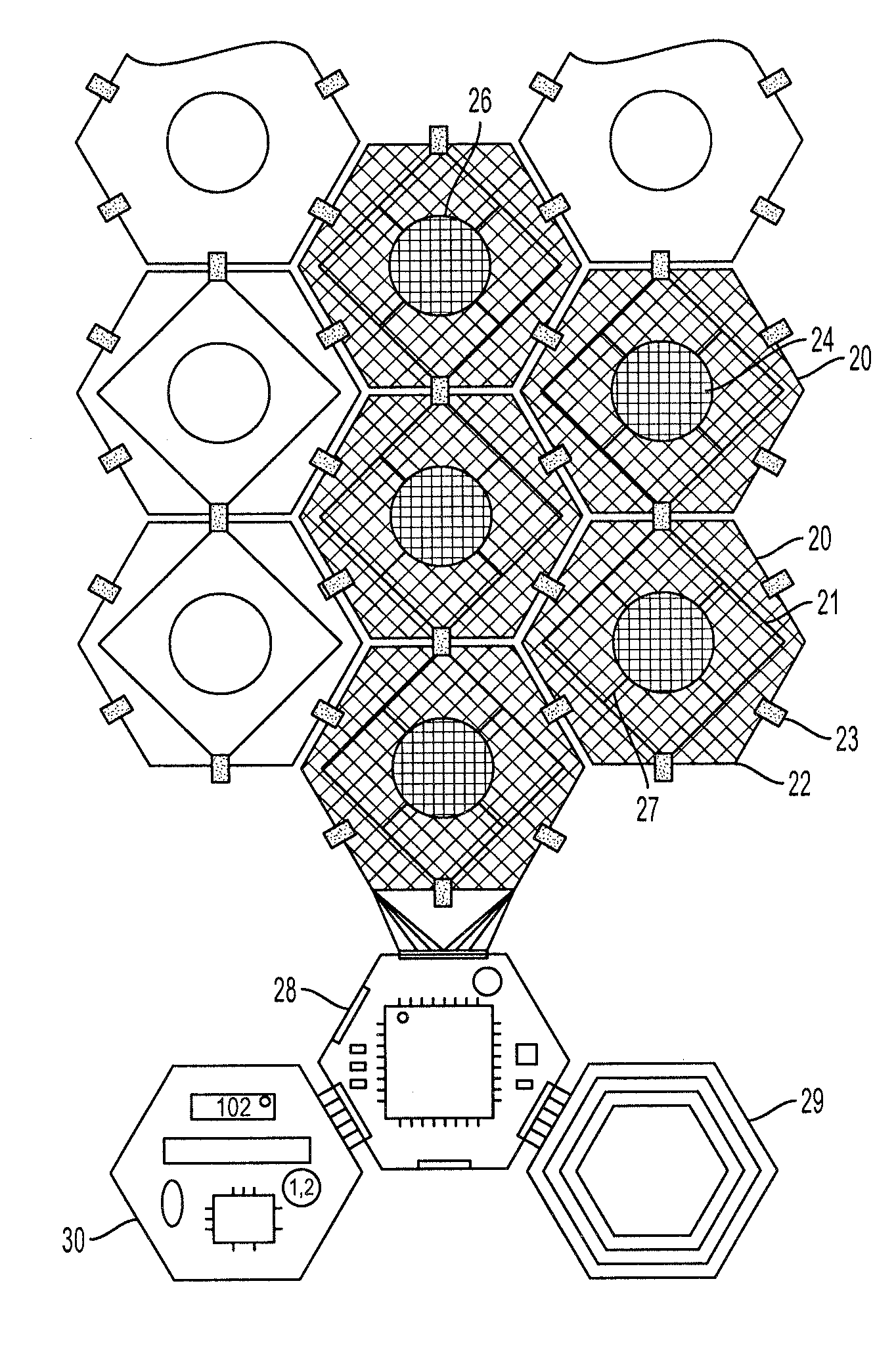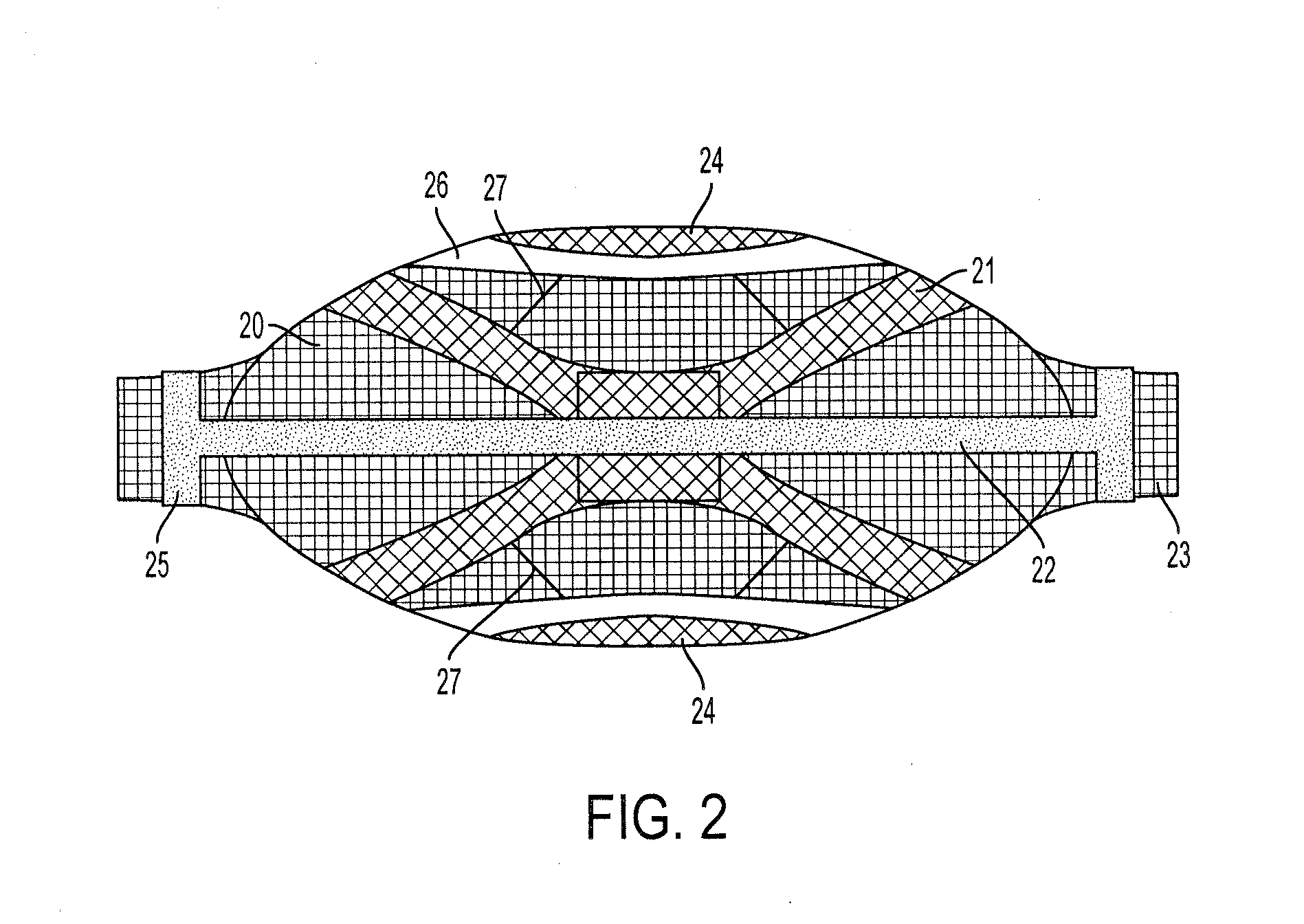Active multicompartmental pressure redistribution system
a multi-compartmental, pressure-redistribution technology, applied in the direction of fluid mattresses, insoles, sofas, etc., can solve the problems of excessive pressure with resultant damage, huge damage, not only to the feet, but also to the ankles, legs, hips and even backs, etc., to reduce excessive pressure, relieve pressure in one specific area, and reduce both abnormal stress on normal feet and normal stress
- Summary
- Abstract
- Description
- Claims
- Application Information
AI Technical Summary
Benefits of technology
Problems solved by technology
Method used
Image
Examples
Embodiment Construction
[0035]A preferred embodiment of a multi-compartmental pressure redistribution system is illustrated in FIGS. 1, 2 and 3 as having containment vessels 20. The containment vessels are constructed of elastic impermeable material and filled with a fluid substance like a liquid, gas or gel, for example. In order to prevent failure of the vessel walls due to excessive force, the containment vessels 20 are reinforced with semi-elastic reinforcement bands 21. These bands prevent bulging of the vessel walls. These bands are attached to a semi-flexible frame 22 that seals the containment vessels 20 by fusing the layers and preventing leakage. The frame 22 of each vessel 20 also houses the flow regulators 23.
[0036]The flow regulators 23 interconnect the containment vessels 20 into a matrix as shown in FIG. 1. They may be positioned on and through multiple sides of each vessel. Based on the requirements of a specific application, these dynamic flow regulators may be passive (uni- or bi-directio...
PUM
 Login to View More
Login to View More Abstract
Description
Claims
Application Information
 Login to View More
Login to View More - R&D
- Intellectual Property
- Life Sciences
- Materials
- Tech Scout
- Unparalleled Data Quality
- Higher Quality Content
- 60% Fewer Hallucinations
Browse by: Latest US Patents, China's latest patents, Technical Efficacy Thesaurus, Application Domain, Technology Topic, Popular Technical Reports.
© 2025 PatSnap. All rights reserved.Legal|Privacy policy|Modern Slavery Act Transparency Statement|Sitemap|About US| Contact US: help@patsnap.com



